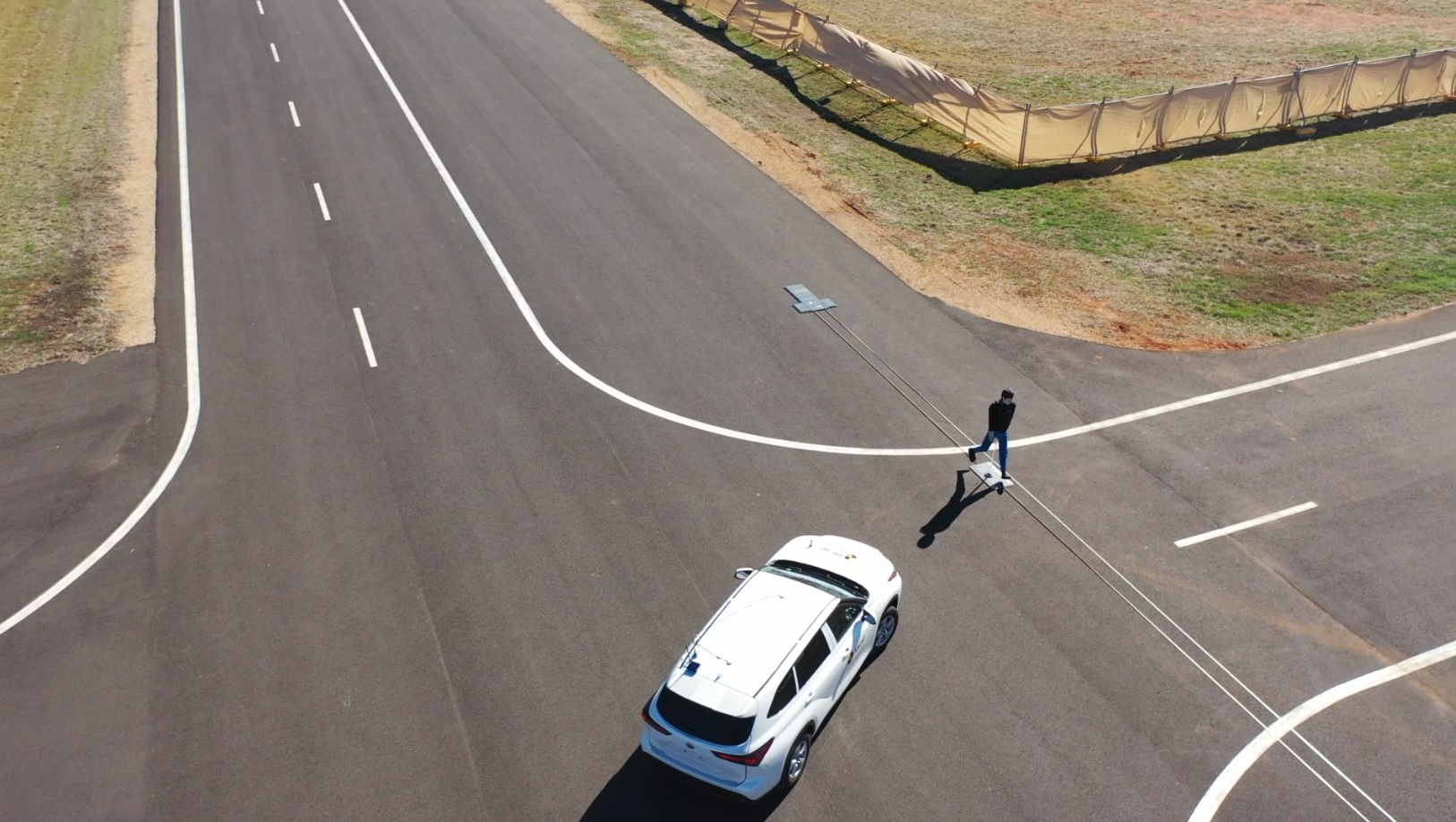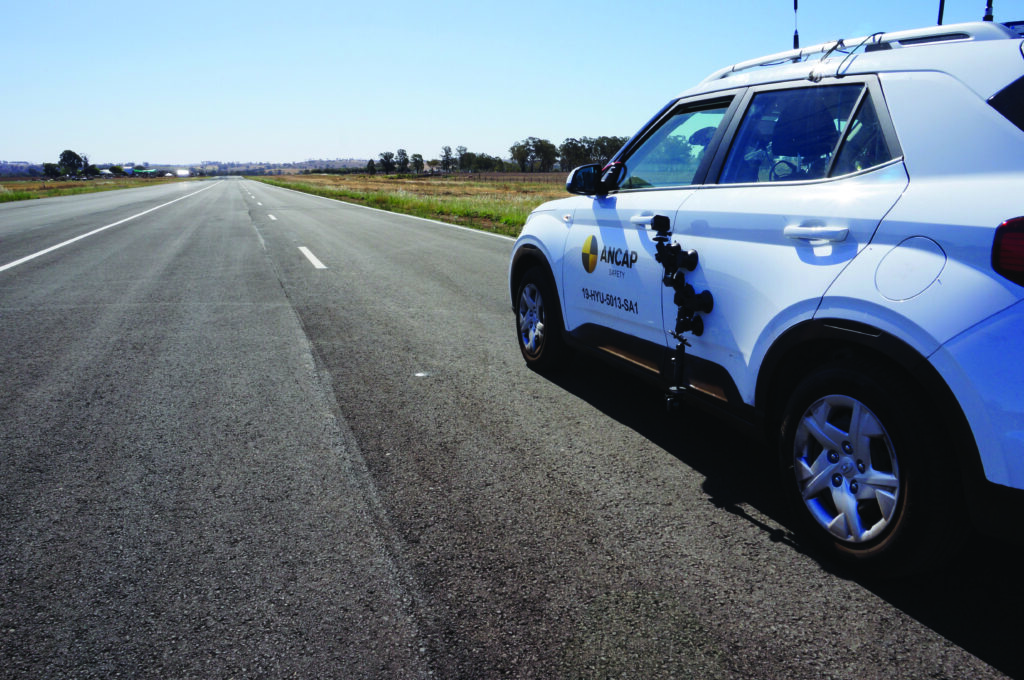Following an AS$1.6m investment, Transport for New South Wales has brought ADAS testing to Australia for the first time – and its cutting-edge new facility has an even greater purpose ahead
Located approximately 300km west of Sydney and surrounded by farmland, Cudal in New South Wales, Australia, is unlikely to have registered on the automotive industry’s radar until recently. But as the Australian government sets out its framework for connected and autonomous vehicle adoption, the town is spearheading vital research. An overhaul of Cudal’s former airstrip has created a safe, flexible space where engineers can test emerging technologies in the unique conditions found on the country’s road network.
Developed and operated by Transport for New South Wales (TfNSW), the Future Mobility Testing Facility opened in autumn 2019 thanks to an AS$1.6m (US$1.15m) cash injection from the state government. Remarkably, it’s the first facility of its kind in Australia equipped to undertake the full spectrum of safety assist assessments required under the Australasian New Car Assessment Program’s (ANCAP) five-star rating regime. Activities there augment the work conducted at TfNSW’s 40-year-old Crashlab in Sydney’s Huntingwood suburb, where passive safety analysis takes place.
Test engineer Alex Lai moved over to the Cudal site to spearhead research, having previously focused on passive safety testing at Crashlab. He says that plans for the new proving ground began to take shape in 2018. “In the beginning, its defining purpose was to provide a facility that would enable us to support and conduct safety assist testing for new vehicles – in line with Euro NCAP and ANCAP protocols – without needing to send them to Europe,” he explains.
“However, the site and our strategies have evolved in the meantime, broadening our focus into EVs, connected and autonomous features and future mobility.”
Australia’s regulatory backdrop is changing quickly. ANCAP began monitoring the availability of AEB within new cars in 2015, and in January 2018 it was officially covered in the ratings system as ANCAP protocols were aligned with those of Euro NCAP. Although fitment is still voluntary, it’s become a selling point for new vehicles and uptake figures are growing. In December 2015, only 3% of new models included AEB as standard. By June 2020, 66% of vehicles had been outfitted with AEB and 53% with lane support systems, according to ANCAP. If national government proposals are enacted, AEB will become compulsory for newly launched models from July 2022, and for every vehicle on sale 24 months later.
For that reason, notes Lai, analysis outgrew what Huntingwood could accommodate. “We carried out some [safety assist] testing at Crashlab, but constraints such as the length of the roadway limited what we could
do. At 180m, it would have become increasingly challenging to complete the full suite of testing there, particularly the high-speed scenarios, and we’d have been limited in the diversity and range of testing
we could carry out,” he says.

Favorable features
Cudal offered the ideal foundation for the Future Mobility Testing Facility. The former airport, which was decommissioned in the 1990s, is on almost 32ha of land and had a 1.6km runway in the center. That 17m-wide roadway has provided enough space to simulate vehicle-to-vehicle and vulnerable road user scenarios with a broad range of vehicle sizes, with plenty of run-off and room to adapt the layout over time.
“We can offer conditions that set us apart from European test facilities, including gravel roads, flood scenarios and muddy terrain, and there is a variety of non-paved surfaces that will enable regional and rural autonomous vehicle penetration,” comments Lai.
He goes on to explain that accidents on rural roads account for two-thirds of road fatalities in New South Wales. “One of the unique challenges [we face] is doing research into technologies that can help protect road users in incidents involving one of our most iconic residents – yes, the beloved kangaroo – on our rural network. Among other native wildlife, vehicle impacts with kangaroos are very common on rural Australian roads, so being able to test technology that reduces these incidents is good for everyone.”
Refurbishment of the old airstrip began in July 2019. It involved resurfacing the runway to highway standards, adding Moshon lighting for night-time testing and bisecting it with two 60m-long, 10m-wide junctions built to ANCAP stipulations. The three hangars have been converted to workshops and offices housing 11 full-time staff, including a team of four technical personnel who were trained in-house to work with the latest safety technologies.
“The work we do is very specialized and it was difficult to recruit anyone with this experience locally,” says
Lai. “The technical team was carefully selected based on unique skill sets, especially their robotics experience from other industries – such as mining – and multidisciplinary knowledge. Each member was trained in the use of ADAS equipment and familiarized with relevant testing protocols and standards.”
The equipment inventory includes steering, accelerator and braking robots from AB Dynamics, alongside soft pedestrian and vehicle targets. VRU targets, including articulated adult and child pedestrians, were sourced from 4activeSystems. The organization plans to add motorcycle and rider targets in the near future.
The Future Mobility Testing Facility carried out the first ANCAP safety assist test in the southern hemisphere just a few weeks after commissioning on October 28, 2019.

Support system
The team is also setting out its own roadmap toward testing more advanced systems, which will eventually involve some upgrades to the infrastructure at the site (see Well connected, below). The track includes roadside RT3000 GNSS/INS GPS motion packs and base stations, which enable centimeter-accurate positioning and can assist early vehicle-to-vehicle and vehicle-to-infrastructure testing. Engineers use purpose-built laptops, sharing data via on-site fiber-optic connections and with site-wide 4G as a backup. The facility is among the recipients of a combined A$20m (US$14.5m) federal government program to roll out 5G connectivity for application trials.
Lai says the site provides a unique environment to assess connected vehicles for domestic applications. “Cudal sits on a regional landscape and is exposed to extreme weather conditions. Its relatively remote location also provides the opportunity to develop systems, processes and technologies to face challenges such as accessing connectivity between vehicles and infrastructure.
“To be able to deliver more complex and high-data testing, there will be a need to have more secure and reliable connectivity that will provide higher speeds, more bandwidth and faster latency. 5G connectivity may be a solution and we are currently investigating this implementation.”
In the meantime, the proving ground has clearly hit the right note with vehicle developers. It has had a full diary since bookings opened two years ago, attracting light- and heavy-duty vehicle manufacturers and product developers, and road safety innovation projects, as well as being used for TfNSW’s own campaigns. Inquiries for 2022 are now coming in.
There are already expansion plans in the pipeline, too. “The site is open for business, but it is in its infancy. Our goal is to build New South Wales’s first interactive and connected testbed, facilitating the development and implementation of all future mobility solutions for our road networks. We have the flexibility here to build out and it will be an important asset as we move forward,” Lai concludes.
Well connected
Cudal’s significance goes far beyond its native market. Besides localizing safety assist testing, Lai is hoping to attract international projects to New South Wales and create new opportunities for local industry. Despite its rural location, the site is well connected: It’s within driving distance of Canberra and there are connecting flights to Sydney, Melbourne, Brisbane and beyond.
“Our facility can offer world-class testing in the Australian environment, with ready access to rural scenarios. This could help with the development of technology for global applications, making it a desirable location where engineers can get value and support for their entry into Australian and other right-hand-drive markets,” Lai says.
It’s an ambition bolstered by plans to evolve the facility into a comprehensive testbed for future vehicle technologies. The proposal is to add a progressively larger network of roads, junctions, buildings and street furniture and site-wide high-speed connectivity – all supported by a robust testing framework. Conversations are already underway across the mobility sphere, and the Future Mobility Testing Facility hopes to develop and evaluate technologies within the proving ground’s boundary as well as on local roads.
“The vision of the organization and the function of the facility is to inspire, promote and facilitate the development of future mobility solutions. Our in-depth experience and knowledge with ANCAP testing allows us to confidently provide technical advice when it comes to testing the capabilities and limitations in CAV development,” affirms Lai.
“We are able to set up benchmark/platform test activities that can be modified and implemented for other CAV pilot and trial programs, by adopting well-established test methods and providing high-quality solutions to support the development of new technologies.”


